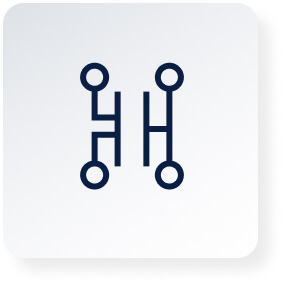Across various sectors, from finance to healthcare to manufacturing, comprehensive cybersecurity measures are critical for protecting sensitive data and ensuring the continuous operation of essential services. One of the most vital, yet often overlooked areas of cybersecurity is OT (Operational Technology) security. As industries increasingly rely on automated and interconnected systems and attacks from threat actors, hacktivists, and nation states steadily climb, protecting these technologies and the environments they operate in from cyberthreats is more important now than ever before.
What is OT?
OT, or Operational Technology encompasses the hardware and software systems used to monitor and control physical processes, devices, and infrastructure. Unlike IT (Information Technology), which focuses on data processing and storage, OT deals with real-world operations, making its security a vital subset of overall cybersecurity efforts.
What is OT Security?
OT security refers to the practices and technologies used to protect operational technology systems from cyberthreats. This includes ICS (Industrial Control Systems), SCADA (Supervisory Control and Data Acquisition) systems, PLCs (Programmable Logic Controllers), DCS (Distributed Control Systems), and other systems that manage and automate industrial processes.
Examples of OT components found in various sectors:

SCADA Systems
Networks of hardware and software that collect and analyze real-time data to monitor and control industrial equipment.
IT vs. OT Security
Area of Focus
IT security primarily aims to protect data integrity, confidentiality, and availability. It focuses on safeguarding digital information, securing networks, and ensuring user privacy. On the other hand, OT security prioritizes the safety, reliability, and operational continuity of physical systems. While IT security protects data, OT security ensures the functionality of machinery and infrastructure.
The Nature of Assets
IT assets include data, software, networks, and user devices. OT assets encompass physical systems like manufacturing equipment, power grids, transportation systems, and critical infrastructure.
Threat Landscape
IT systems face threats such as malware, email phishing, data breaches, and insider attacks. While these attacks can certainly “live off the land” to gain access to critical OT assets thanks to the IT/OT convergence, OT systems are additionally vulnerable to threats like sabotage, industrial espionage, and cyber-physical attacks that can disrupt operations and cause physical harm.
OT networks are unique because they often employ air gaps, which are security measures that isolate a network from unsecured networks, particularly the public internet, to prevent unauthorized access. Despite these precautions, updating legacy OT systems typically requires removable media, essential for maintaining and upgrading critical assets, but also poses a significant security risk. The use of removable media bypasses traditional network security measures, potentially introducing malware and other threats directly into the OT environment, compromising the integrity and safety of these critical systems.
Security Approaches
IT security employs tools like antivirus software, firewalls, email security, and encryption. IT prioritizes confidentiality of its systems. OT security strategies tend to focus more heavily on network segmentation, asset visibility, scanning USBs and portable media, and other security measures to prevent unexpected shutdowns of production equipment and processes.
Compliance and Regulations
Regulations tend to echo these priorities, IT security is governed by regulations such as GDPR, HIPAA, and PCI-DSS, which focus on data protection and privacy. OT security is subject to industry-specific standards like NIST SP 800-82, IEC 62443, and ISO/IEC 27019, NERC CIP, NIS2, Executive Orders, and other regulations that address the security of industrial control systems and critical infrastructure—often prioritizing the reliability of these systems.
Risk Management
IT risk management centers on protecting data and ensuring business continuity. OT risk management emphasizes the safety and reliability of physical operations, often prioritizing human safety and environmental protection over data confidentiality.
Threats to OT Security
OT systems face a unique set of cybersecurity threats that can have severe consequences. As they become more interconnected and integrated with IT systems, they too become more vulnerable to a variety of new threat vectors. The consequences of compromised OT security can be far-reaching, affecting not only the operations and profitability of businesses but also posing significant risks to public safety and national security. Common OT security threats include:

Malware
Attacks like Conficker exploit network vulnerabilities and spread via removable media, making it dangerous for OT infrastructure by crossing the air gap and disrupting critical operations, as seen in the 2008 attack on the UK's Ministry of Defense systems.

Ransomware
Attacks that lock down critical systems until a ransom is paid, like the WannaCry attack that affected the UK's National Health Service.
Real-World Incidents
These threats aren't empty ones or hypothetical—they're very real. Here are just a few modern examples of high-profile cyberattacks that could have potentially been stopped with a larger emphasis on OT security:
Stuxnet
2010
A sophisticated cyber weapon that targeted Iran's nuclear program that caused physical damage to centrifuges.
Ukrainian Power Grid Attack
2015
A cyberattack that caused a power outage for over 200,000 people, demonstrating the vulnerability of critical infrastructure.
Aliquippa Water Infiltration
2023
The Iranian-backed CyberAv3ngers hacker group managed to gain control over a booster station responsible for monitoring and regulating pressure, threatening the drinking water supply.
Potential Consequences of Compromised OT Security
When critical OT networks are compromised, the effects are far-reaching and can significantly impact various aspects of an organization's operations and the broader community. Ensuring the integrity and security of OT systems is essential to preventing a range of adverse outcomes, including but not limited to:
Risks to Public Safety
Compromised OT systems can lead to hazardous conditions, endangering lives and the environment. For instance, a cyber-physical attack on a water treatment facility could contaminate the water supply, posing serious health risks to the public. Similarly, disruptions in industrial control systems could lead to uncontrolled release of hazardous materials, fires, or explosions.
Disruption in Manufacturing
The disruption of manufacturing processes can have implications far beyond financial losses. For example, if the production of a critical vaccine is interrupted, it could delay immunization efforts during a health crisis, exacerbating the spread of disease. Additionally, if a crucial material, such as an alloy, is produced out of specification without detection, it could lead to catastrophic failures in other applications. Imagine a bridge failing because a structural component was more brittle than believed due to compromised manufacturing controls. Such incidents underscore the importance of maintaining rigorous oversight and security in manufacturing operations.
Economic Impact
Widespread outages and disruptions in OT systems can have extensive economic repercussions. The failure to produce or transport goods not only affects the immediate financial health of an organization but also disrupts supply chains, leading to shortages and increased costs for consumers and businesses alike. For example, a cyberattack on a major port could halt the flow of goods, affecting industries worldwide and leading to significant economic instability.

What is IT/OT Convergence?
IT/OT convergence refers to the integration of IT systems with OT systems for improved efficiency, data sharing, and decision-making. This convergence is driven by advancements in technology, such as the IIoT (Industrial Internet of Things), big data analytics, and cloud computing.
Challenges
New Security Vulnerabilities
Increased connectivity introduces new attack vectors.
Complexity in System Management
Integrating disparate systems requires careful planning and coordination.
Benefits
Improved Efficiency
Streamlined operations and better resource management.
Enhanced Decision-Making
Real-time data analytics enable informed decision-making.
Cost Savings
Reduced operational costs through automation and predictive maintenance.
Best Practices for OT Cybersecurity
Considering the challenges presented by an evolving threat landscape, effective OT cybersecurity is essential for protecting critical infrastructure and ensuring the uninterrupted operation of industrial systems. By adhering to OT security best practices, organizations can significantly reduce the risk of cyberattacks and mitigate potential damage. The following sections outline key strategies and practices for enhancing OT cybersecurity, including thorough risk assessments, essential cybersecurity practices, and the development of a defense-in-depth security framework.
Key Cybersecurity Concepts

Peripheral and Removable Media Security
Enforce strict scanning security policies for removable media, like USB storage devices at every point of entry—from lobby to endpoint.

Network Perimeter Security
Granularly control data traffic in real-time between networks with data diodes and security gateways.

Supply Chain Security
Disruption of the supply chain can cause a domino effect—where an exploited vulnerability can eventually be felt further down the chain, leading to substantial damage.

Patch Management
Regularly update software and firmware on critical assets to fix security vulnerabilities.
Implementing a Defense-in-Depth OT Security Framework
A well-structured security framework not only protects critical infrastructure but also ensures the resilience and continuity of industrial operations. The following five steps provide a comprehensive guide to developing and implementing an effective OT security framework, focusing on assessing current security measures, establishing policies, deploying controls, educating staff, and maintaining continuous monitoring.
The Importance of Compliance with Standards and Regulations
Adhering to industry standards and regulations is critical for ensuring that OT security measures are comprehensive and up to date. Compliance not only helps in mitigating risks and protecting critical infrastructure but also ensures that organizations meet legal and regulatory requirements, which can prevent costly fines and legal actions. Three key standards and regulatory frameworks relevant to OT security are the NIST (National Institute of Standards and Technology) guidelines, the IEC (International Electrotechnical Commission) standards, and the NERC CIP (North American Electric Reliability Corporation Critical Infrastructure Protection) standards.
NIST Guidelines
The NIST Cybersecurity Framework is widely recognized for its comprehensive approach to managing and reducing cybersecurity risk. Key components include:
Identify: Develop an understanding of the organization’s OT environment to manage cybersecurity risk. This involves identifying physical and software assets, defining cybersecurity policies, and establishing risk management processes.
Protect: Implement safeguards to ensure the delivery of critical infrastructure services. This includes access control measures, training and awareness programs, data security protocols, and maintenance processes.
Detect: Develop and implement activities to identify the occurrence of a cybersecurity event. This involves continuous monitoring, detection processes, and security event analysis.
Respond: Develop and implement activities to take action regarding a detected cybersecurity event. This includes response planning, communication strategies, analysis, and mitigation.
Recover: Develop and implement activities to maintain plans for resilience and restore any capabilities or services that were impaired due to a cybersecurity event. This includes recovery planning, improvements, and communication of recovery activities.
IEC Standards
The IEC provides international standards for all electrical, electronic, and related technologies. For OT security, key standards include:
- IEC 62443: This series of standards provides a comprehensive framework for securing industrial automation and control systems (IACS). It addresses various aspects of cybersecurity, including:
- General Requirements (IEC 62443-1-x): Provides an overview of terms, concepts, and models related to OT cybersecurity.
- Policies and Procedures (IEC 62443-2-x): Covers requirements for establishing and maintaining security policies, procedures, and practices.
- System Security Requirements (IEC 62443-3-x): Specifies security requirements for control systems and components.
- Component Security Requirements (IEC 62443-4-x): Details the requirements for secure product development and lifecycle management for control system components.
IEC 61508: Addresses the functional safety of electrical, electronic, and programmable electronic safety-related systems. It helps in identifying and mitigating risks associated with the failure of safety systems.
NERC CIP Standards
The NERC CIP standards are mandatory for entities operating within the bulk electric system in North America. These standards are designed to protect the BES from cybersecurity threats and include:
- CIP-002: Identifies and categorizes BES Cyber Systems and associated assets based on their impact on the grid.
- CIP-003: Establishes cybersecurity policies and procedures to manage the security of BES Cyber Systems.
- CIP-004: Requires personnel and training programs to ensure that individuals with access to BES Cyber Systems are qualified and understand their security responsibilities.
- CIP-005: Focuses on electronic security perimeters, requiring measures to control electronic access to BES Cyber Systems.
- CIP-006: Specifies physical security controls to protect BES Cyber Systems from physical threats.
- CIP-007: Outlines requirements for system security management, including patch management and malware prevention.
- CIP-008: Requires incident reporting and response planning for cybersecurity incidents.
- CIP-009: Establishes recovery plans to ensure BES Cyber Systems can be restored following a cybersecurity event.
- CIP-010: Addresses configuration change management and vulnerability assessments.
- CIP-011: Ensures information protection, including the handling and disposal of BES Cyber System information.

The Future of OT Security
The strategies and tools used to secure our world’s critical systems need to stay ahead of an aggressive threat landscape. The future of OT security is set to be shaped by emerging trends and technological advancements that promise to enhance protection and resilience. Key developments such as AI and machine learning, edge computing, and blockchain technology are poised to revolutionize OT security, offering new ways to predict, detect, and mitigate threats.
Additionally, the nonstop evolution of technology will necessitate adaptive security strategies and ongoing professional training to ensure that security teams remain equipped to tackle emerging challenges.
Emerging Trends
- AI and Machine Learning
Leveraging AI and machine learning for predictive maintenance and threat detection.
- Edge Computing
Enhancing security by processing data closer to where it is generated.
- Blockchain Technology
Using blockchain to secure data transactions and enhance system integrity.
The Role of Professional Training and Development
Ongoing education and training are essential for keeping up with the latest security practices and technologies. Investing in professional development ensures that security teams are well-equipped to handle evolving threats.
Protecting the World’s Critical Infrastructure
By understanding the unique challenges and threats associated with OT, implementing best practices, and embracing emerging technologies, organizations can significantly enhance their cybersecurity posture. Proactive approaches to OT security, including regular risk assessments, continuous monitoring, and adherence to industry standards and regulations are essential for safeguarding critical infrastructure.
For the last 20 years OPSWAT, a global leader in IT, OT, and ICS critical infrastructure cybersecurity, has continuously evolved an end-to-end solutions platform that gives public and private sector organizations and enterprises the critical advantage needed to protect their complex networks and ensure compliance. Talk to one of our experts today to discover the critical advantage in OT cybersecurity.
FAQS
Q. What is OT (Operational Technology)?
A. Operational Technology refers to hardware and software systems designed to monitor and control physical devices, processes, and events in various sectors like manufacturing, energy, and utilities. Unlike IT, OT directly affects the physical world.
Q. Why is OT Security important in modern industries?
A. As industries increasingly use automated and connected technology, ensuring the security of OT systems becomes crucial. Security breaches can lead to severe consequences including operational disruptions, financial losses, and risks to human safety.
Q. How do IT and OT security differ in terms of asset management?
A. IT security primarily focuses on protecting data and maintaining confidentiality, integrity, and availability. OT security, however, is centered around ensuring the safe and reliable operation of physical processes and machinery, with a stronger emphasis on availability and safety.
Q. Can you provide examples of real-world threats to OT systems?
A. Examples include ransomware attacks on critical infrastructure, such as the infamous attack on the Colonial Pipeline, and malware targeting industrial control systems like the Stuxnet virus.
Q. What are the regulatory requirements for OT security?
A. OT security regulations vary by industry and region, but common standards include the North American Electric Reliability Corporation (NERC) for the energy sector, and the International Electrotechnical Commission (IEC) standards for industrial automation systems.
Q. What are some common strategies for assessing risks in OT environments?
A. Risk assessment in OT involves identifying vulnerabilities in physical devices and software, evaluating the potential impacts of these vulnerabilities, and determining mitigation strategies. This often includes regular system audits and adherence to industry-specific security standards.
Q. How can organizations improve their OT security incident response?
A. Improving incident response involves establishing a dedicated security team, developing incident handling protocols, conducting regular security drills, and employing continuous monitoring tools to detect and respond to threats promptly.
Q. What are the benefits of IT/OT convergence?
A. Converging IT and OT can lead to optimized business processes, improved efficiency, enhanced data collection and analysis capabilities, and ultimately, a stronger competitive edge in the market.
Q. What emerging technologies are shaping the future of OT security?
A. Technologies like artificial intelligence and machine learning are increasingly used to predict and mitigate security threats in real-time. Blockchain technology is also being explored for its potential to secure device-to-device transactions and communications in industrial environments.
Q. How should companies train their staff on OT security best practices?
A. Staff training should focus on specific security policies, the use of protective technologies, and the best practices for operating and maintaining OT systems securely. Regular training sessions and drills can help reinforce these practices.







